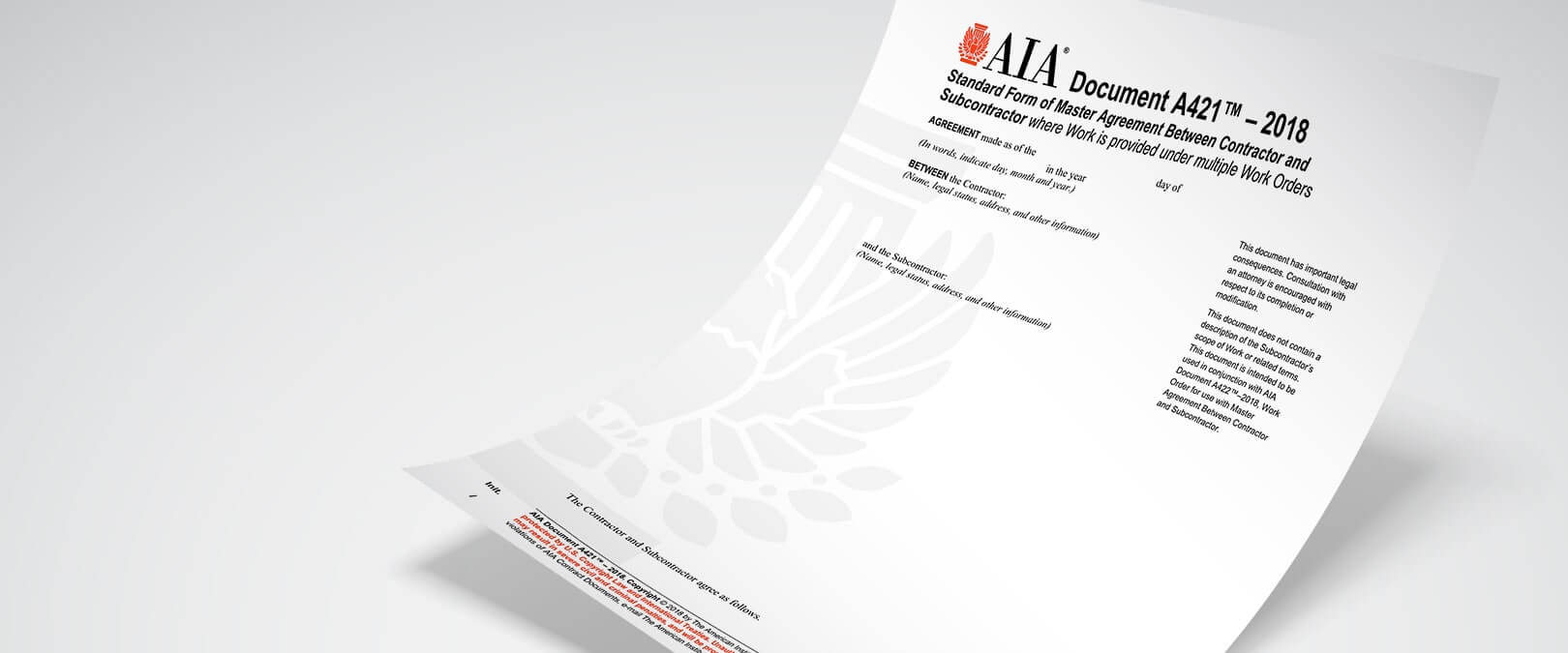July 20, 2023
AIA Contract Documents publishes numerous coordinated sets agreements, as well as specialized forms and exhibits, that address particular aspects of a construction project. These coordinated sets of agreements cover a variety of delivery methods, such as design-bid-build, design-build, construction manager as constructor (sometimes referred to as CM at risk), construction manager as advisor, and integrated project delivery. These agreements have been developed to allocate risks and responsibilities at a level of detail specific to different sizes or types of projects. In addition, these contracts and forms are recognized throughout the design and construction industry as the benchmark documents for managing transactions and relationships on construction projects. For project owners, coordinating the terms of contracts between the prime contractor and architect offers several benefits. Here are some key advantages of using AIA Contract Documents coordinated sets of agreements on construction projects:
- Consistency and Clarity: Coordinated agreements ensure that both the prime contractor and architect work from terms, specifications, and requirements that are aligned for the project. This consistency helps to minimize misunderstandings, conflicts, and ambiguities during construction. It also promotes communication and a shared understanding of the project goals, and instructions on how to meet those goals.
- Simplified Decision-Making: When the prime contractor and architect have coordinated contracts, they can align their decision-making processes in a more effective manner. This enables parties to address potential conflicts, changes, or issues in a timely and efficient manner, avoiding delays and disruptions. Consistent contract terms allow for collaboration and coordination between the prime contractor and architect, which can result in seamless project execution.
- Risk Management: Coordinated contracts help manage and mitigate project risks. By clearly defining roles, responsibilities, and obligations for both the prime contractor and architect, potential gaps or overlaps in accountability can be identified and addressed. This promotes an organized and structured approach to risk management, thereby reducing the likelihood of disputes.
- Quality Assurance: Coordinated contracts can help to ensure that specifications, standards, and quality control requirements are communicated between the prime contractor and architect. This coordination promotes a shared understanding of the expected level of workmanship and materials, reducing the potential for errors. By maintaining a unified set of expectations, project owners may have greater confidence in the quality of the final deliverables.
- Change Management: Changes are inevitable in construction. Coordinated contracts facilitate the management of changes by providing a framework for documenting and approving modifications to items such as scope, schedule, and budget. When the prime contractor and architect work from coordinated contracts, the evaluation of change order requests, as well as assessments of the change’s impacts, are aligned and appropriate adjustments may be made in a timely and efficient manner.
- Enhanced Project Oversight: Coordinated contracts enable the owner to have a comprehensive view of the project, as both the prime contractor and architect are operating within the same contract framework. This facilitates effective project oversight, monitoring progress, and evaluating performance against established criteria. Project owners can better assess whether the project is meeting its objectives and take appropriate actions if deviations occur.
There are numerous benefits to owners and other project participants when using coordinated contracts on a construction project. Overall, when contracts for different parties are aligned, it helps to ensure that the project owner’s expectations are effectively communicated and executed, thereby increasing the likelihood of efficiency and success on the project. AIA Contract Documents are not only coordinated between the owner, prime contractor, and architect, but also subcontractors, consultants and other project participants as well.
To learn more about how AIA Contract Documents can help you with your business, visit https://aiacontracts.com/.
Click here to know if you received a legitimate email from AIA Contract Documents
AIA Contract Documents has provided this article for general informational purposes only. The information provided is not legal opinion or legal advice and does not create an attorney-client relationship of any kind. This article is also not intended to provide guidance as to how project parties should interpret their specific contracts or resolve contract disputes, as those decisions will need to be made in consultation with legal counsel, insurance counsel, and other professionals, and based upon a multitude of factors.

